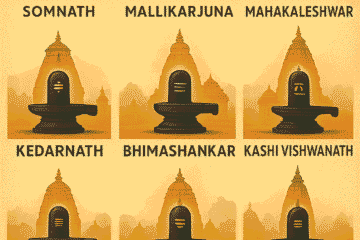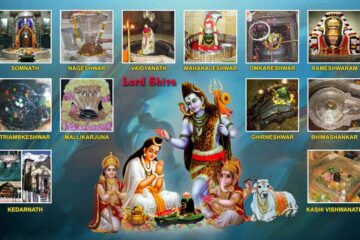
In Hindu mythology, the lingam, often referred to as the Shivlinga, is a sacred symbol representing the divine masculine energy of Shiva, one of the three main deities of Hinduism. The Jyotirlinga, on the other hand, is a specific type of Shivlinga that is believed to be a manifestation of Shiva’s cosmic light. Let’s explore the key differences between these two sacred symbols.
Shivlinga: The Universal Symbol
The Shivlinga is a simple, abstract representation of the divine, typically depicted as a cylindrical or conical stone pillar. It is believed to symbolize the infinite, the creator, the preserver, and the destroyer. The base of the Shivlinga, known as the Yoni, represents the divine feminine energy and is often depicted as a square or circular platform.
- Symbolic Significance: The Shivlinga represents the ultimate reality, the Brahman, and is considered a powerful symbol of spiritual awakening and liberation.
- Worship: The Shivlinga is worshipped in various ways, including abhisheka (ritual bath), aarti (waving lamps), and puja (offerings).
Jyotirlinga: The Cosmic Light
A Jyotirlinga is a specific type of Shivlinga that is believed to be a manifestation of Shiva’s cosmic light. It is said that these Jyotirlingas spontaneously appeared on Earth, radiating divine light and energy. According to Hindu scriptures, there are twelve Jyotirlingas scattered across India, each representing a different aspect of Shiva’s divine power.
Twelve Jyotirlingas: The twelve Jyotirlingas are:
- Somnath Jyotirlinga
- Mallikarjun Jyotirlinga
- Mahakaleshwar Jyotirlinga
- Omkareshwar Jyotirlinga
- Kedarnath Jyotirlinga
- Bhimashankar Jyotirlinga
- Kashi Vishwanath Jyotirlinga
- Trimbakeshwar Jyotirlinga
- Vaidyanath Jyotirlinga
- Rameshwaram Jyotirlinga
- Dwarkadhish (Gujarat)
- Ghrishneshwar Jyotirlinga
Significance: The Jyotirlingas are considered to be the most powerful and sacred shrines dedicated to Shiva. They are believed to grant devotees blessings, spiritual enlightenment, and liberation from the cycle of birth and death.
In conclusion, while both the Shivlinga and Jyotirlinga represent the divine masculine energy of Shiva, the Jyotirlinga is a more specific manifestation of this energy as cosmic light. The Shivlinga is a universal symbol of the divine, while the Jyotirlingas are considered to be particularly potent centers of spiritual power. Devotees of Shiva often make pilgrimages to the twelve Jyotirlingas to seek blessings and spiritual enlightenment.


